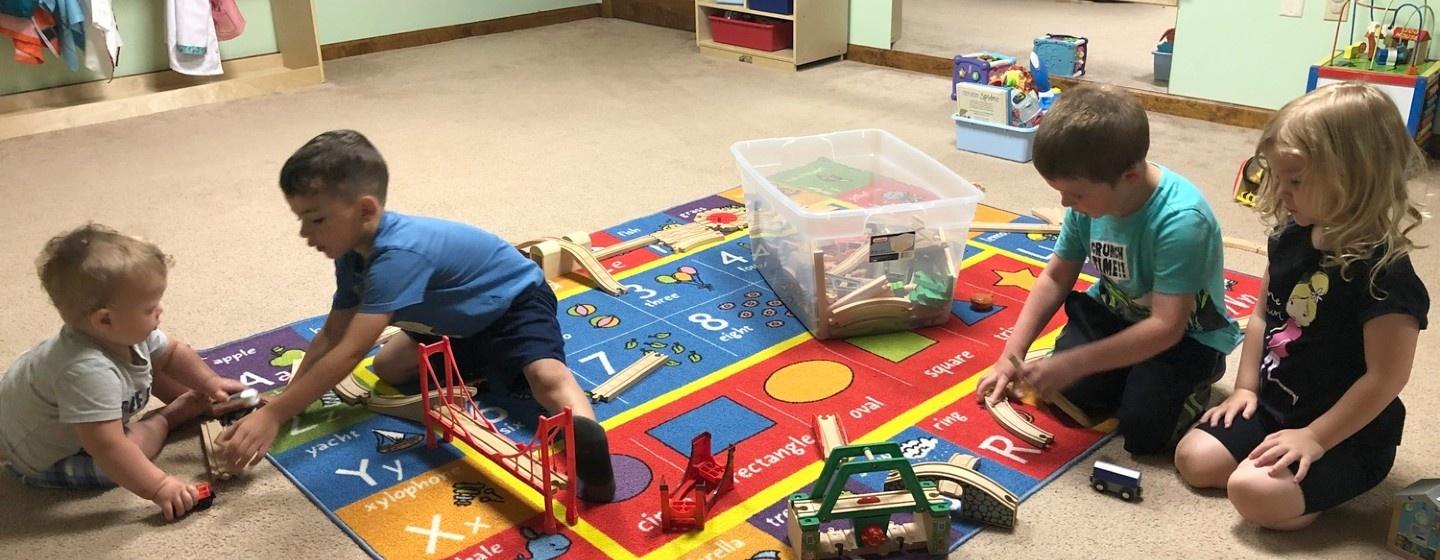More New York Families Can Now Get Help to Pay for Child Care. Do You Qualify?

Expanding Child Care Assistance |
The coronavirus pandemic put a big spotlight on child care, and it’s resulted in some big shifts in public policy over the past few years. The most significant change in New York has been that many families are now eligible for child care assistance, which is money to help pay for your child’s spot in a daycare or with a home provider.
Check to see if you're eligible for child care assistance using this state quiz.
If you’re a family of four with two kids, and you make less than $90,000 a year, you’re eligible for child care assistance. In October, you’ll be eligible if you make less than $99,000, which is 85% of the state median income. That’s a huge change from how things were just a few years ago. In 2021, the limit was $55,000 for a family of four, which was based on 200% of the federal poverty level.
The increased limit, nearly doubled in just a few years, makes hundreds of thousands of new families eligible.
"It's a huge expansion," said Cathy Brodeur, director of the Jefferson-Lewis Childcare Project, which is a Child Care Resource and Referral Agency, one of 35 across the state. "It is a, like, amazing commitment by the state...but it won't go anywhere if people don't sign up for it."
The table below shows the current income limits in St.Lawrence County, and what they will increase to in October of 2023.

Middle-income families are now eligible |
Brodeur said many families don’t realize that they now qualify for assistance, because the expansion now means "a lot more of what we think of as middle-income people" are eligible. She said these are "...families that are struggling to pay for childcare, but they're making a decent income."
Brodeur says child care is expensive (around $10,000 - $12,000 per child, per year for five days a week of care) and the assistance can help alleviate that expense.
"There are a lot of people right now that have their kids enrolled in care, that have had their kids enrolled in care for a couple of years, that don't realize they could be getting help with paying for child care."
How assistance helps families and providers |
Karen Caldon manages the childcare assistance program at St. Lawrence County’s Social Services. Since August of 2022, when eligibility expanded, Caldon says they’ve seen lots of new applications. "Since then there has been a huge increase in families that are eligible for the program, and for that assistance, which is a great plus for our area," said Caldon.
They’ve enrolled 50 new families into their program in the last nine months, bringing their total number of families from 80 to 130, with many more eligible. Caldon expects another wave of applications in Ocotber, when the limit increases from 300% of federal poverty level to 85% of NY's median income.
Caldon said using childcare assistance helps both families and providers.
For families, she said it’s a lot of money saved. It can also allow families to go from part to full-time care, and parents to go from part to full-time work. "You know, young families are able to, first of all, stabilize their child care, to know that they can continue working. And that young families can further stabilize and put more money towards paying off student loans, or buying a house."
For providers, it’s a steady paycheck. The childcare assistance program even pays providers for days when a child is absent. The current cap is 24 absentee days, but it will increase to 80 days in October when the income limit increases.
"So that stabilizes [things] for the provider," said Caldon. "They know that if they have a child on the child care assistance program, that even if this child is maybe sickly and doesn’t go to daycare and maybe ends up with more absences, they are still going to get paid."
An increase in legally exempt child care providers |
But here’s the big wrench in the system. The North Country is still a childcare desert. Getting assistance doesn’t mean you’ll be able to find a spot in a day care, or with a home provider.
Because there’s such a scarcity of care, Karen Caldon, in St. Lawrence County, and Cathy Brodeur, in Jefferson and Lewis, say they’ve been seeing more families going another, less known route: using the Legally Exempt Child Care Services process.
Brodeur says this is often referred to as friend, family, and neighbor care. Brodeur explained how it works: "You can have somebody that's a family member or your neighbor or somebody that you know and trust, approved to receive child care assistance."
Individuals have to be approved by the state and go through a background check, but then families can use their assistance to pay, say, a grandma, or a retired neighbor, to watch their children.
Brodeur said Legally Exempt Services is a great option for families waiting for a childcare spot to open up. It’s also an attractive alternative for parents that work shifts and nights when there are very few licensed providers available.
Reimbursement rates for Legally Exempt Child Care Providers have also increased, which makes the money that Legally Exempt Providers receive more substantial, to around $700 a month per child. Brodeur says that changes the calculations for some. "It can be something that mom could actually appreciate, this income. It's not token income."
Originally reported by Amy Feiereisel for North Country Public Radio
Related

Assembly Returns, New Gun Crime Data, Bill to Study Reparations in New York
The State Assembly returns; new gun crime data; & we discuss a new bill to study reparations in New York state.


